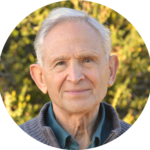Why The Body Is Essential In Psychological Healing – Dr. Pat Ogden – HPP 64
For centuries, millions of people have suffered tremendously with trauma and its negative effects and will continue to do so until we crack the secret on how to effectively rid ourselves of this illness. With the ongoing threat of COVID as well as the worsening political upheavals in society, we continue to see this happening to a lot of people.
Trauma has certainly damaged countless lives both physically and psychologically. But what if there is hope for healing, not just in the short term but permanently? What if there was a revolutionary approach to combat trauma through body therapy and mindfulness practices?
In today’s episode, we’ll be tackling just that. We are extremely delighted to be joined by a celebrated author, co-founder of the Hakomi Institute and the founder of the Sensorimotor Psychotherapy Institute (SPI), Dr. Pat Ogden. Join us as we discuss how trauma finds its way into our bodies causing us to show its ugly effects in society collectively and how we can effectively heal ourselves through interesting habits that we can do at home and much more.
Show Notes:
Body Centered Psychotherapy – 02:27
“So well, sensorimotor psychotherapy is a work that I developed and founded an Institute in 1981. And it’s really based on the idea that the movement, posture, gait and sensation of the body both reflects and sustains our psychological issues”
Why This Approach Is So Unique – 04:02
“from my background as a bodyworker and certified in the Rolfing method of structural integration, which really looks at posture and your line, and if you have the ability in your body to use gravity to lift your body up, which is a natural given ability, as you think of a little child, little baby who is just learning to sit up they have super straight spines. And the reason for that is that they’re using gravity to actually not only hold them to the earth but to lift them up as well”
Understanding How Trauma Infiltrates the Body – 10:04
“So, if we grow up in an atmosphere where our expression is not welcome, so if I’m not reinforced and given positive reinforcement, for being expressive and showing myself, I might start holding that expression in and we do that physically, not just with our minds, very much physically of attention”
Mindfulness and Implicit Memory – 13:43
“We have different thoughts, different physical responses. When we get into the salty stomach, even though we all might run out the door, if we do that with very different styles, very different emotions, valence and everything. And when we’re looking at the organization of experience, we’re really looking at what underlies the content”
Interesting Regulation Practices to do at Home – 18:09
“So, on this surface, we might be more dysregulated collectively, because of the political turmoil on many levels. I would say that one of the most important tools, I think, is to start to recognize the somatic signs of dysregulation in your own body”
The Importance of Relationships – 28:26
“We’re wired to connect with others, whether it’s your partner, your friends, your kids, family, your animals, plants, nature. That’s how we’re built. We’re social beings. I think that’s what’s been hard to so many with the pandemic is finding ways to actually connect”
Couples Therapy: Reading Body Language – 31:49
“So that was one of their tools that they could use during their arguments. And then they wrote me a few weeks later and said that it was really great to have that in their toolbox to use because now they understood these are patterns left over from childhood. So, I think often with couples, it’s a matter of how elucidating experientially those implicit problems, and how it is communicated body to body”
Developing a Dynamic Relationship – 38:17
“I think you learn what your partner needs as it stands for. So, in a solid relationship, those people often just learn to kind of give each other what you need right now to calm down, not have to be right”
Full Episode Transcript
SUMMARY KEYWORDS
body, people, trauma, sensorimotor, dysregulated, psychotherapy, patterns, implicit, meaning, systemic oppression, called, talk, pandemic, nervous system, arousal, client, mindfulness, emotions, movement, work
SPEAKERS
Keith Kurlander, Dr. Will Van Derveer, Dr. Pat Ogden
Dr. Pat Ogden 00:00
We haven’t learned how to regulate our nervous system so it keeps piling on. And I think that’s part of what’s happening right now in the time of the pandemic and really the trauma of what’s happening in the US with the upheaval around black indigenous people of color and also politically.
Keith Kurlander 00:23
thank you for joining us for The Higher Practice Podcast. I’m Keith Kurlander with Dr. Will Van Derveer and this is the podcast where we explore what it takes to achieve optimal mental health. Hey there. So, we’re about to get into a great discussion with one of the major pioneers in somatic psychotherapy. She was involved in this movement from the beginning of it, at least the modern beginnings of somatic psychotherapy. Obviously, there were people involved in this, 100 plus years ago, and really has moved this field forward. Her name is Dr. Pat Ogden. And we’re really going to examine together how the body stores our memories, and what that means and the usefulness of understanding the role of the body in the healing journey of one’s psyche. So really understanding why the body is so necessary to relate to and also to kind of delve into in different ways, both from a psychotherapy standpoint but also more of a mindfulness standpoint of really being able to be mindful of one’s body and the ways things are stored in procedural memory and different types of things. In 1981, after co-founding the Hakomi Institute pioneered by Ron Kurtz, Dr. Ogden founded her own school, a branch of the Hakomi Institute, which is now known today as the Sensorimotor Psychotherapy Institute (SPI). Let’s welcome Dr. Ogden to the show. Hi, Pat, thanks for being on the show.
Dr. Pat Ogden 02:04
Sure. Pleasure to be here. Thank you.
Keith Kurlander 02:06
I’ve been following your work for a long time. And I thought it would be great to just get started with more introduction here about you. You’ve been in the somatic trauma therapy space for basically as long as it’s been around. Is that correct?
Dr. Pat Ogden 02:22
I don’t know about as long as it’s been around.
Keith Kurlander 02:27
Right, I guess that’s a good point. I guess when the language around trauma started coming about in the 80s. And I’m wondering if you could just say a little bit more about body centered psychotherapy for people that don’t know a lot about it, or the history of it. And just where are we at now? Where did we come from just in terms of body centered psychotherapy?
Dr. Pat Ogden 02:48
Well, I can talk about sensorimotor psychotherapy. So well, sensorimotor psychotherapy is a work that I developed and founded an Institute in 1981. And it’s really based on the idea that the movement, posture, gait and sensation of the body both reflects and sustains our psychological issues. So, with trauma, perhaps if someone is traumatized, that’s going to show up in their body somehow. Maybe the shoulders go up like this, or maybe they’re ready to be aggressive, or maybe they pull down and pull back. So, we look at how the body participates, and whatever a client’s presenting issues are, so that the body then becomes a really important target of intervention, along with emotions and thoughts. I think that is body therapy and certain sensorimotor psychotherapy in a nutshell.
Keith Kurlander 03:47
Maybe a second part of that conversation is differentiating out a little sensorimotor psychotherapy from other modalities, what’s similar and what’s different, that might include the trauma conversation of SE or EMDR?
Dr. Pat Ogden 04:02
I haven’t really studied EMDR, or these other methodologies. I don’t know about comparisons, I think from my background as a bodyworker and certified in the Rolfing method of structural integration, which really looks at posture and your line, and if you have the ability in your body to use gravity to lift your body up, which is a natural given ability, as you think of a little child, little baby who is just learning to sit up they have super straight spines. And the reason for that is that they’re using gravity to actually not only hold them to the earth but to lift them up as well. And as we’re impacted through relationships and life experience, our bodies start to shift and it gets out of alignment with gravity. So, in my work, I’m really looking at the procedural tendencies of the body. how the body is a piece of gravity, how is it not a piece of gravity. And with the intention of tracking that as we were, not only using those operations from gravity as kind of an access route because say if somebody pulled in like this, I’m exaggerating, but even a slight bit that has meaning. You know, it could mean I have to hide myself; it could mean someone’s going to hurt me. It has meaning for that person. So, as we work through the impact of whatever happened to them, through the body to discover the meaning from the body, I’m also expecting the body to shift. So it’s really more at peace with gravity. And it’s certainly not unique to sensorimotor psychotherapy. But I think it’s an identifying feature.
Dr. Will Van Derveer 05:53
I’m wondering if you could tell us what got you interested in the first place in how the body carries these patterns?
Dr. Pat Ogden 05:58
It started honestly, when I was a little kid and my mom put me in dance class, about seven years old, because she knows I was going to be really tall, over six feet tall. And she said, well, if you’re going to be tall, you’re going to be graceful so you’re going to start dance lessons. And I remember my dance teacher, Mrs. Bayes trying to teach us just about that poise in the body, and I was seven years old, and I just got it, and it felt so different. I stopped and I still feel it. It started way back then. And as a kid, I grew up in the country and my body was definitely my resource like physical action and I’d loved physical challenges. In the 70s, I was teaching yoga and dance at a psychiatric hospital in Tennessee, and I started noticing the in-patients that took both yoga and dance started getting better, and maybe they’re going to get better anyway. And my curiosity about the role of the body in psychological healing. And then I met Ron Kurtz in the early 70s, my best friend, the most influential mentor, and he was the first person who talked about the body as an access route like that we can look at the posture of the body and the patterns of the body. It was an access route into childhood issues. And that was a super critical turning point. And I would say, in terms of influences, Ron has the biggest influence, but nobody was talking about trauma in the 70s. So Strickland’s book, I think it came out in the late 70s on Vietnam and compassion fatigue and opportunity, Strickland’s book was over a decade away. But I was counselor and referral for working for a clinic at the University of Colorado in Boulder in the late 70s. The patients that they sent me all had sexual issues like they weren’t interested in sex, weren’t able to respond sexually and so forth. And as I worked with them, they weren’t getting better because I was doing everything that I have learned in Social Work stolen from Ron about active listening and going into the body and going to TP motions in my class are actually getting worse, some of them are getting worse. And that really bothered me. So, I started thinking about what I was doing, and thinking that maybe if I just keep them in the body, and keep referencing the body and make sure that there feeling their body and sensing there body as we talk or as we process and they started getting better. So that was from my clients that I first learned about trauma, not from anybody else, because all those clients every single one had one session each.
Keith Kurlander 09:04
Right. Now sensorimotor psychotherapy, is that trauma modality or is it more of a body centered psychotherapy that works with trauma?
Dr. Pat Ogden 09:14
I started out in the 70s, I didn’t work directly with trauma because nobody knew how to work with trauma. So, we were working very much relationally with attachment related issues. Often, no one really called it attachment, but the beliefs that reform in childhood is the result of how our attachment figures interact with us. So, I was working very much relational and very emotional. So that was my grounding, with relationships, with strong emotions. But then it grew into working with trauma and my first book in some ways that was great was called Trauma and the Body. So, I got known kind of for trauma work, but trauma work to me is more solemnly of the fully rounded bodies psychotherapist.
Keith Kurlander 10:04
I think you’ve already spoken to it a bit through procedural memory in the body and I’m just curious if you can expand a little on the concept a lot of people here, not just lay people and professionals, there’s this concept of things being stored in your body, whether it’s memories stored in your body or trauma stored in your body, I’m wondering if you could just expand on that of what that means from your perspective?
Dr. Pat Ogden 10:26
Well, from my perspective, I think about how everything that we experience impacts our bodies. So, if we grow up in an atmosphere where our expression is not welcome, so if I’m not reinforced and given positive reinforcement, for being expressive and showing myself, I might start holding that expression in and we do that physically, not just with our minds, very much physically of attention. So, if somebody comes into my office this sort of pattern, I’m thinking right away, okay, whatever happened to them translates into this kind of posture. Because you know, that’s not our natural organic way of living in the body. And I find that very exciting. And it sorts of gets to the root of things much more quickly because we’re really dealing with the implicit part of ourselves, not the part that can talk about anything, that this kind of pattern could even develop in infancy or the hippocampus is online before memory. So, I think if it more that the body is calling the shots and sustains. So, talk about if a person’s body is tight and they’re not expressive, that tightness alone is going to sustain that lack of expression and reinforcing a belief of I shouldn’t express myself. But it’s also stored and reflected in all nervous systems, patterns of hyper and hypo arousal and where we live in that window of tolerance by determining the define, well, Dan Siegel coined the term window of tolerance in 1999. Before that, I had developed this model called the modulation model, where there’s two parallel lines, and if your arousal can stay kind of within that line goes up, and we’re really excited and it comes down to sleeping, meditating, maybe, but so we can bring it back into what Dan calls that window of tolerance. It’s like an optimal route system. And when we have trauma, and the naturally arousal shoots up way out of the window to mobilize adaptive action, or it can plummet when action is ineffective, and for traumatized people, they can have a dysregulated pattern in the nervous system or want to recalibrate.
Dr. Will Van Derveer 12:59
Thanks for that. I think something that I’m really interested in, in my work with people as well. It seems to me that implicit memory, and we’re kind of veering into a conversation about types of memory and how it’s stored and so forth, but it seems like unconsciousness, these automated patterns, it seems like it’s really where the healing often lives. And I think some of our listeners probably don’t know much about working with implicit memory. And I’m curious what’s beyond the recognition that you mentioned of someone’s walking in the room and they’re tied in a certain way, or their approaches in the sensory motor that elicit these implicit patterns that you can then work with?
Dr. Pat Ogden 13:43
Yes, that’s a really great question. And this I learned from Ron Kurtz in the 70s’. I was so fortunate to meet him when I was in my 20s. He talked about the difference between just talk therapy and just talking about things and learning about how we organize our experience because we can all have a similar experience like we’d all be in a room and somebody screams fire and we all organize around that very differently. We have different thoughts, different physical responses. When we get into the salty stomach, even though we all might run out the door, if we do that with very different styles, very different emotions, valence and everything. And when we’re looking at the organization of experience, we’re really looking at what underlies the content. So, for example, if somebody comes into my office and is talking about rape, or relational issues, like my partner never supports me, we can use that stimulus to find out the underlying patterns that are driving their responses. And that’s where mindfulness comes in. Because mindfulness really enables us to stop functioning really. Have the mind and give it another job, which is to observe what’s going on inside. So, I might say to a client, well, what happens right now when you just think about that? Let’s say those words, no one supports me, never gets hurt and starts to happen inside. And when we ask this mindfulness question here right now what happens? And it’s getting to the organizational patterns in body, mind and emotion that drive those experiences. So, a client might say, well, when I think about it, I’m starting to pull back, my shoulders get tired and stop breathing, and start to shake. I have these thoughts that I’m going to die. I’m really terrified. The issue, no one supports you, and what happens if you just say that inside no one supports me what starts to happen? it starts really small and the body starts to collapse. You know, I have these images of my mother who was always so busy. And so, it gets to those underlying organizational phenomena that really drives these experiences. So that’s how we approach it very specifically.
Dr. Will Van Derveer 16:19
So, mindfulness becomes an access point to the implicit layers of memory and the body?
Dr. Pat Ogden 16:27
Absolutely. Because it gets underneath what we think about this.
Dr. Will Van Derveer 16:33
And then we have an opportunity to remodel the belief systems that are driving the implicit patterns.
Dr. Pat Ogden 16:40
Well, I think of it in two ways. I think like with relational non traumatic issues, we were really integrating our beliefs, our emotions and the body like the person who doesn’t get support who’s collapsing and all, they might have beliefs, like no one is there, no one ever supported me there might be a lot of emotion with that, and physical collapse and all and then we go deeply into that with the emotion and everything to kind of go through it and we work with those child parts that has this posture and then everything starts to shift. The body starts to shift to better support yourself. But trauma it’s a little bit different because trauma first and foremost does affect the body reflects our nervous system and our motor system before it even goes to the fear extensions, or thinking brain. So, with trauma, I think of it working more directly just with the body and not with the belief systems or with the emotion at least at the beginning. If your nervous system is dysregulated, the beliefs that go along with that are things like I’m not safe, I’m dangerous, I can’t trust it. So, until the nervous system gets regulated, it’s going to be hard to work with beliefs that are different from just trauma.
Dr. Will Van Derveer 18:09
Right now, it seems like a lot of people are feeling that way, not safe with the pandemic and political turmoil, the recent deaths of people of color, I’m wondering if you have any ideas of regulation practices that could be useful under these circumstances for people at home and social isolation?
Dr. Pat Ogden 18:31
Well, I do have a lot of ideas. But I want to say one thing, though, about people of color. Black Lives Matter movement and all the hostility and systemic oppression. I mean, that’s nothing new, from people of color, I think the newness is that it’s now much more in the collective consciousness which is a good thing because until we face the trauma, or history and slavery and the Holocaust, we’re not going to be able to heal this. So, just like with the sexual abuse, pledge acknowledges happens to me and I think we’re there collectively. So, on this surface, we might be more dysregulated collectively, because of the political turmoil on many levels. I would say that one of the most important tools, I think, is to start to recognize the somatic signs of dysregulation in your own body. Like if your arousal starting to go up over that window, what happens to start to tighten up to watch it through your eyes get wide, and once you have the signals, then do something immediately to regulate, which means work with the body in some way like be grounded, do some controlled movement, do some self-touch, some people like to push against the wall but do something in your body to claim that arousal. The same if you recognize the signs if you’re also going too low, where you might feel numb or like you’re shutting down, or starting to just go blank, do some movement, go for a walk, do something. For one thing, a dysregulated nervous system will compromise your immune function. To recognize when it’s going outside the window and then do something right away to bring it in the window. Something that she could do even in the ER and she felt the arousal go up for her just a little self-touch and she did it anyway, nobody really knows she’s doing it. A little self-touch to bring her arousal down. So that she can regulate herself before it gets out of control.
Keith Kurlander 21:05
Just some thoughts on how people can recognize that they’re hyper aroused, and I think often get caught up in it and it’s like a day later or a year later, where you realize oh, now I’ve got a big problem.
Dr. Pat Ogden 21:19
I think it has to do with sensitivity to your body. It’s the first place, it’s going to show up, like when I work with clients, think of that trigger yesterday, like when you read the news, just think about it a little bit and what’s the first thing that happens in your body? Well, Nexus, okay. So that’s the first signal. And sometimes you go through what happens next and my shoulders tighten, and start breathing, I start gasping for breath. And more of it. That first signal when you have the chance to change it, and everybody’s body is so different. So, you can’t say that neck thing was really specific to that person, my neck doesn’t program. When I get triggered. Now my left shoulder comes in and I lose my movement a little bit. It’s different. So, people have to develop that sense of Stephanie. And oh, I think also identifying your triggers. But for many of us, you know, we can watch, we can look at the news for like, a half hour, and then realize a horse racing was tight or not breathing or gone numb so we know that’s a trigger we can take.
Keith Kurlander 22:38
I am curious if you could comment too on this concept of resiliency and sensitivity and how one person who’s dysregulated for an extended period of time might develop what we would call pretty severe psychiatric symptoms from that. The next person might show up differently, but not really as a big mental health disorder, like they just seem to have a different constitution, their sensitivity levels are different, their resiliency level. Can just comment on that so your perspective on like, why does stress impact people really differently and some people seem to be able to get by in certain ways while other people get really leveled by?
Dr. Pat Ogden 23:19
Well, for one thing is cumulative. And if we haven’t resolved, or to some degree resolved our histories of trauma and stress, we haven’t learned how to regulate our nervous system. So, it keeps piling on. And I think that’s part of what’s happening right now in the time of the pandemic. And really the trauma of what’s happening in the US with the upheaval around black indigenous people of color and also, politically. I think it brings up implicitly our past unresolved trauma. So, I think that’s one reason. And we overlook also the resilience that is often developed, these kinds of challenges. I was reading a paper just yesterday actually about intergenerational transmission of resilience for black Americans. And there are studies that show that there’s an increased stability and resiliency, and many of that population to handle current traumatic events, because of the history of trauma has just brought that forward, even epigenetically. So it’s a complicated topic.
Keith Kurlander 24:34
I think it did. And you were talking before about implicit memory and then also beliefs and how that shows up in your modality. And I think there’s a lot of really scared and confused people right now angry. There’s a lot of issues we’re facing that are more to surface right now. They’ve always been here, and I’m just curious about the role of meaning making in the work you’ve done and Any thoughts on that with just what everybody’s facing right now?
Dr. Pat Ogden 25:05
Well, I mean, meaning making, I think about thanks to Ed Tronic and my friends and brilliant colleagues, he really elucidates the meaning making is not just one thing. It’s not cognitive, we also make meaning with our body, with our imagery, with our emotions, with the nervous system. He calls it polymorphic, meaning making. It’s complex, it’s not just one meaning, we can have many different meanings about the same situation. We do look at how meaning is held in the body, like the meaning of that tension pattern that I showed, meaning I can’t express myself. That’s critical. I do think, as Martin Luther King and many others have pointed out that losing hope can be really devastating. And I think right now, especially with many marginalized communities, the pandemic is super challenging because of facing that pandemic is already at a financial disadvantage. Many people are afraid of losing their homes, losing everything, losing their jobs, or suffering from the children being deported was just so much unnecessary stress due to the systemic oppression we’re living in. I think I forgot the point of your question.
Keith Kurlander 26:33
I think you answered it because you basically spoke to that meaning making is multifaceted, obviously, also very relevant in relation to without certain meeting making, we can go into hopelessness. This vote I took from what your answer, which is also pretty devastating to be in that experience of hopelessness.
Dr. Pat Ogden 26:56
Yeah, you know what I’m thinking in the trauma field, we always talk about if you’re able to take action, to do something to make the trauma less bad or protect yourself, that is strengthening, and people are less likely to experience PTSD so much. So I think of that now, if we can take some action, like anything, help your neighbor, contribute to the Black Lives Matter movement, contribute to contributions. There are so many avenues to support things expanding instead of destructing.
Keith Kurlander 27:33
But I’m glad you said that, Pat because you said at the beginning of the talk, what happens when you basically are losing the permission to express as a child, and then what can happen postural and also, obviously, psychologically from that, and it seems like it’s just such an important message that if we’re just talking about racism, that it’s so important that people have a space to express about what’s going on right now.
Dr. Pat Ogden 28:00
Yeah, and to actually do it in whatever way is right for you. Abraham Kennedy who wrote the book on how to become an anti-racist, talks about it’s not enough to say you’re not racist, you need to become an anti-racist to combat systemic oppression and to combat the systemic policies that we’re suffering from, doing a disservice to so many people.
Dr. Will Van Derveer 28:26
I was thinking about this movement from, we could call it freeze, maybe freeze response or how to move an agency, which I think is what I’ve been reading about how to become an anti-racist is it actually requires proactive movement to actually take responsibility for changing this culture or the systemic oppression. And I automatically think about the vagal nerve when I think about, you know, moving out of paralysis and into engagement, which takes me to the possibility of relationship and you said Keith, a few minutes ago like how do you actually, if you’re already way past dysregulated, and you don’t know that you are, wondering about your perspective, Pat on, you’ve spoken about secure functioning, and relationship. I’m wondering how you feel about the role of the partner or the friend in terms of addressing some of these patterns that we’re talking about.
Dr. Pat Ogden 29:26
I mean, relationships are essential. We’re wired to connect with others, whether it’s your partner, your friends, your kids, family, your animals, plants, nature. That’s how we’re built. We’re social beings. I think that’s what’s been hard to so many with the pandemic is finding ways to actually connect. And one of the ways and I’m looking at that literally is through what John Bowlby called, proximity seeking actions. Because we learn patterns of connection as we grow up so I often ask the client just to reach out, it’s possibly seeking actions have to do with reaching, moving closer, making eye contact, really seeking proximity with others and one client reached out like halfway like this with her elbow to her side and she said, why would I reach out? You know, nobody’s ever been there for me. I was left alone all the time. Another guy reached out with his arm, stiff, his palm down like this is something his body actually was pulling back at the same time. And he said, I’m on my own. He said, nobody defended me. Nobody protected me. My parents were absent, and those are simply seeking habits that show up in our body that have everything to do with how we see proximity with others so it’s a great avenue to explore, to learn. We see this in the Ed Tronics videos with the little babies where he still faces the experiment. And the mother has the, well not always the mother, the caregiver, has a blank face. And you’ll see the babies desperately reaching out trying to get their attention. But then after a while they give up the postural integrity. And you think, okay, if that continued over childhood, they would stop reaching out to others because they’re just not capable of producing a desired outcome. And those are the procedural habits that really can interfere with our ability to draw on relationships, that co regulation to help us stay on the window and give us that sense of belonging and nurturance.
Keith Kurlander 31:49
Do you have some tips for couples or close friends on how to help people get along better? It’s so hard obviously because it’s really hard to get along in a relationship. Hard to do well, and you know, all the different modalities have different ways. We talked to Stan Tatkin recently, you know, his modality has a lot of body tracking involved. So, I’m curious from your perspective, do we need to be learning a new language of how to track people’s bodies? Is that a part of getting along? Like, what are your thoughts? How do we do this?
Dr. Pat Ogden 32:22
When I work with couples, this is something that we’re really developing in sensorimotor psychotherapy, I strongly feel that the content is almost never the issue, the fact that they come on with content, what happens? It’s never the issue. It’s their body to body conversation that’s the issue. I have found that I would say, I don’t like to use absolutes, but I’ve never found that to be true. But that’s the core of it. And it has to do with what you’re talking about meaning too because, for example, a couple that I worked with may fight all the time. And they suddenly go from zero to 60. And like that, and would just fight constantly, and they love each other very much. And they didn’t want to get divorced or anything. They have been working with a top therapist, and we’ve given them homework, like, take a break, take 10 minutes apart and come back together. So, they do that. But then they start blaming each other, like, you didn’t really calm yourself down and you’re still mad, and it just wasn’t working. So, I asked him just to remember the last fight, which was the night before, but it was all there. It was just she felt this rising energy and to make the long story short is kind of really fun. It’s kind of an aggressive impulse. He felt himself pull back, started to shut down. His fingers went up like this, his hand went up, and there it is, right there. Right. When they get stressed, he pulls away and tries some fun. She wants to get closer and gets a little bit attacking and they all make meaning about that. Hers was, he doesn’t really want to engage with me, you know, he’s going to leave me. And this was implicit until it started going with the body, this was just going to attack me because of the point. So that was outside of their awareness that was implicit communication. And so, explore that to mindfulness in doing that. It was just so illuminating. And with this couple I felt like it was so solid and I really wanted to shift it. So, I did a little external. She went ahead and did that Patty, and I asked her husband, instead of pointing back to reach out to her, and she just melted. That’s all she ever wanted. So that was one of their tools that they could use during their arguments. And then they wrote me a few weeks later and said that it was really great to have that in their toolbox to use because now they understood these are patterns left over from childhood. So, I think often with couples, it’s a matter of how elucidating experientially those implicit problems, and how it is communicated body to body and how they make meaning of each other. That’s usually so hurtful that just exacerbates the argument. So that’s in a very concise way how I see couples.
Keith Kurlander 35:32
That’s great. And I mean, I do it a lot that way too, professionally. And I’m curious, what are some tips for people at home like, how, where do you start, you don’t have a therapist and how do we just have a new way of being with each other where we can actually spot some of these things?
Dr. Pat Ogden 35:49
It’s a good question. It always kind of gets back to mindful awareness and curiosity. It’s hard to do when you’re in the midst of an emotional charge situation with a relationship. I’ve worked with some clients who have agreed that when they start to escalate, that they will drop the content, just circle back and not talk about it, which is that window of tolerance thing when they get outside the window, there’s no point in talking about it because I can guarantee you, you’re not going to get anywhere. So, as you can recognize the signs of going out, that’s this couple and then make an agreement together. But if you feel yourself going out, I can’t talk to them, nothing making sense. And as you can own that even though you feel like you’re making perfect sense. And then you can both do whatever you need to recognize, and sometimes it’s co regulation and sometimes you just need to follow each other and not fall until the connection. Sometimes it’s doing it yourself, take a breath and whatever. I have one couple different things going on and for her, she had to place her hands on her heart and say to herself I can take care of myself and I asked him, he placed his hands on his belly, where he felt a dysregulated little kid. To hold that little kid, when they get into their fights and just seeing each other do that gesture, both of their losses into relational dysregulation. People are always looking for a one size fits all formula and our bodies are so unique and our relationships are so unique. That’s why awareness is so important because you know your body and its triggers. You know, you learn the regulation. And you can do that in a comfortable relationship and being so supportive. But I don’t know how you can do that without awareness.
Dr. Will Van Derveer 37:53
Sounds like really a call to action for people to get to know their own system to develop that awareness of their own triggers and their partner’s triggers. And to begin the process through awareness to like in the example you gave of inviting the partner to go forward rather than back, to begin to break up or disrupt these unconscious patterns.
Dr. Pat Ogden 38:17
Yeah, I think you learn what your partner needs as it stands for. So, in a solid relationship, those people often just learn to kind of give each other what you need right now to calm down, not have to be right. I remember one couple that was so clear that the wife was she just wanted to be right. So, I asked him to just say that out loud like. I think she said being right is more important than really connecting with you. And as soon as she said that she’s like that’s not true. And I’m like, well I’m here and that’s what I’m hearing and that these fundamental experiments can just shift the dynamic and they don’t have to be so serious, but that was just so fun.
Keith Kurlander 39:11
How should people learn more about your work? Is there anything you want to highlight right now?
Dr. Pat Ogden 39:17
Well, let’s see. They can go to the website www.sensorimotorpsychotherapy.org There’s lots of free resources and webinars that we’re offering. So that’s a great resource. We are offering trainings online now. We hold trauma training online. I have a new book coming out, which is time it’s been worth over five years, called a pocket guide to sensorimotor psychotherapy in context, which is really speaking to systemic oppression and how we can address those issues through our work and also the history of Western Eurocentricity in psychotherapy as a whole, and how we’re just beginning, we’re just designed by folks for that population. So, acknowledging that and there’s also one book that people might be interested in who aren’t going to do training. That’s a book I wrote with Janina Fisher in 2015, called sensorimotor psychotherapy interventions for trauma and attachment. The reason that might be helpful is 30 to 35 chapters, short chapters, that we try to make user friendly, that clients as well could read or the layperson could read, and it’s accompanied by worksheets. So, and you can get I’m going to tell people, the worksheets are impossible to get from the book, but you can order them from sensorimotor psychotherapy pdf link. So those are some resources to help them.
Keith Kurlander 40:58
Great and we end similarly with everyone, which is if there was a billboard that every human being would see at one point in their lifetime, you could put a paragraph on there, what would you want them to know?
Dr. Pat Ogden 41:13
Will sent me that question. I thought that sounds good. Put in the billboard. I mean, the thing that I feel people could benefit from is really valuing the body as an avenue of exploration and change and realizing that the body holds everything that you’ve ever experienced. So, when you get familiar with it, and its patterns and gestures, and its movements, you have so many more opportunities to grow and to change and to have the life that you wish.
Keith Kurlander 41:50
Well, thank you so much for the conversation, Pat. I deeply appreciation of all the work you’ve done, for the field and for human beings. I mean, you’ve really played your part in understanding how to be inside a body, and how to try and live well in that body. So, thank you for all that. And thank you for being on the show.
Dr. Pat Ogden 42:11
You’re welcome! It was a pleasure to meet you both.
Keith Kurlander 42:17
Most taking away so much from these interviews with really brilliant and brave people in the space of psychology, and really how to live optimally. Pat has really inspired me over the years. I’ve followed her work and just really understanding why it’s so important to track our bodies and understand the physiology and the nervous system and how all that relates to being well in this world, and how to live well, especially during really challenging times which we touched on quite a bit in this episode. I think more than ever, right now is a moment in history where it’s a calling to be relating at a higher level to oneself if we’re going to make a positive impact in the world right now and also to stay healthy, and for people we work with to stay healthy. It’s a moment where we really need to show up. And I think that Pat has really contributed quite a bit of knowledge to a modern science of how to live in a body and be well in this world. We look forward to connecting with you again on The Higher Practice Podcast, where we explore what it takes to achieve optimal mental health.

















